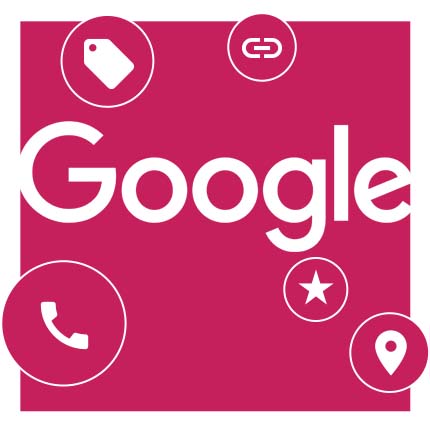Google Ads extensions help advertisers show more useful information in their paid ads and increase SERP real estate, leading to an increase in CTR. Think about phone numbers, addresses, additional links to pages, and much more. Using appropriate ad extensions will boost the CTR which leads to a higher Quality Score. This means your CPC will go down, and your ads can get more clicks within the same budget.
There are over 10 different types of extensions, and here, we will look at the most widely used. You can benefit from all of them, or just one or two. Don’t hesitate to test different combinations until you find the most profitable one.
An important note is that Google decides when and which extension to display. Your job is to add the ones relevant to your business. So let us see what you can choose from.
Call Extensions
Call extensions display your phone number and allow your potential customers to reach out to you directly from the ad. Depending on the device used, your contacts are shown in two ways – as an actual number (on desktop)
and as a call button (on mobile).
When accessing your ad from smartphones, potential customers can directly call you by pressing the button. Call extensions are the best way for “emergency” businesses to attract new clients, for example, emergency dentist services, emergency plumbers, emergency car shops. The success in using this extension hides in the direct connection between you and your clients.
If you want to count calls as conversions, you must turn on the call reporting function in your Google Ads account.
Call extensions are an effective way to reach the desired CTR, as it allows customers to act at the moment, saving them time.
This type of extension is not very useful if you have an online store. For these kinds of businesses, we suggest using sitelinks.
Sitelink Extensions
Sitelink extensions include additional links to your website in your ad. They show your potential customers more pages from your website they may be interested in. This increases your chances to get the user’s click.
Depending on the Google algorithm, sometimes sitelinks can be shown only as a title, without the description. Meaning, if you want to impact your audience and match the user intent, it is essential to do in-depth keyword research. Find the phrases that will resonate with your customers’ needs.
Keep in mind that to use the full potential of sitelink extensions, you need to have enough copy on your site. Plan your content for the pages you want to link so the user can effortlessly find what they are looking for. Use up to 10 but no less than two sitelinks in each ad campaign. This is the minimum requirement so Google can show sitelinks in your SERP result.
When it comes to the pages you are linking to, choose the ones that can benefit your potential customers by giving them details about pricing, current offers, specific/unique services, or interesting and informational articles.
One way to discover what works best with your audience is to perform a backlink analysis. By uncovering which of your content is referenced the most, you can get insight into what visitors find most helpful on your site. Test with a few of the top pages and see what works best.
Structured Snippet Extensions
Structured Snippet extensions appear right below the main ad text and provide more details about your business.
Choose your Structured Snippets carefully and match them to the text of the ad. Provide valuable information, not only superlatives such as “amazing” and “best”, and don’t repeat what the ad text already says.
The additional text space can help you show more valuable information for your users and meet customers’ objections beforehand. Try to think about what may stop a lead from clicking the ad, address their concern and gain their trust.
Google offers you a couple of different data points (headers) from which you can choose when you create your structured snippets. They are:
- Amenities
- Brands
- Courses
- Degree programs
- Destinations
- Featured hotels
- Insurance coverage
- Models
- Neighborhoods
- Service catalog
- Shows
- Styles
- Types
For instance, if you choose the “Amenities”, you can list all the “extras” your accommodation or hotel has like WiFi, Parking, AC, etc. The “Courses” header allows you to showcase the various types of courses and classes you offer. Google recommends using at least four values per header, so it has enough data to choose from when answering a particular user query.
Structured Snippet extensions can help you develop a successful Google Ads campaign and increase your traffic.
Callout Extensions
Callout extensions are similar to the Structured Snippets, as they also help you highlight a feature of the services/products your business offers. Look at them as the place to showcase your unique selling points.
Unlike Structured Snippets that list different features, callout extensions rely on flashing the instant benefits of your business. Phrases like “50% Discount”, “24/7”, and “Free shipping” are ideal for attracting potential customers. Callouts must be 25-characters at most, so you need to use them wisely.
The Google algorithm will usually show two to six callouts under the text of your advertisement. Be careful not to repeat the USPs you already have in the ad copy and focus on calling out different benefits. You never know what might resonate with your customers’ search intent.
This extension can be especially beneficial to startup businesses as they can showcase how they are different and what unique features they offer. It will distinguish them from the competition and help them increase sales – the two things any new company needs.
The Google algorithm will usually show two to six callouts under the text of your advertisement, so be sure to add at least two.
Price Extensions
Price extensions mark the price of the services/products you offer. You can successfully use them to differentiate your business from the competition and set the right customer expectations from the start.
The price transparency influences the trustworthiness of the business and indirectly its site traffic. Just be sure your prices are competitive. Otherwise, you may discourage people from clicking on your ad and learning more about your product/service. The more clicks you get from potential customers, the more sales you can make.
Location Extension
The location extension shows your business address below the ad text. Keep in mind this link doesn’t lead to your website but to Google Maps.
The location extension requires a listing in Google My Business. So make sure to have one before setting it up.
These extensions are a must-have for all local brick-and-mortar businesses and are especially beneficial when you apply them in mobile-focused ad campaigns. People that predominantly use their smartphones to access information are more likely to come and find your location. Therefore it’s important to check if your business information and address are up-to-date.
Promotion Extensions
Promotion extensions show the current deals you have in an attention-grabbing way. You can even add discount codes, like in the example below.
You can show this extension on a particular day or for a certain period, for instance, a day before Mother’s Day. Promotion extensions are a great way to increase your CTR.
Google allows you to adjust the type of promotion, the currency, the occasion, the displayed dates, and the promo requirements. You get two lines of additional text for the latter. You even have a list of international holidays from which you can choose. It’s important to note that you need to create and edit the extensions within six months of their starting date to use them.
If you are part of an affiliate program, another option is to link to a page where you provide an affiliate discount code. The goal is to create win-win opportunities for you and your site visitors.
App Extension
App extensions are mobile-specific and can improve the chances of getting your app downloaded. They look like this:
When someone clicks “Install” they will be led to the app store, not to your site. However, app extensions allow you to track your downloads, so this is a huge plus.
Once you start to create your extension, you can add your own unique CTA. The text space is limited to 25 characters, so not much space for creativity there. Use urgency words like “now” and “today”, to influence your potential customers. A good example of a compelling CTA is “ Get Your [App Name] Now”.
App extensions help you extend your reach beyond the app store and get ahead of your competitors right on the SERP.
Final Thoughts
As you can see, Google Ads extensions can improve immensely the quality of your ad text, drawing the attention of your potential customers and increasing your CTR and traffic. Remember, don’t limit yourself to only using one. Choose the ones most relevant to your business and goals and create captivating and profitable ads.




